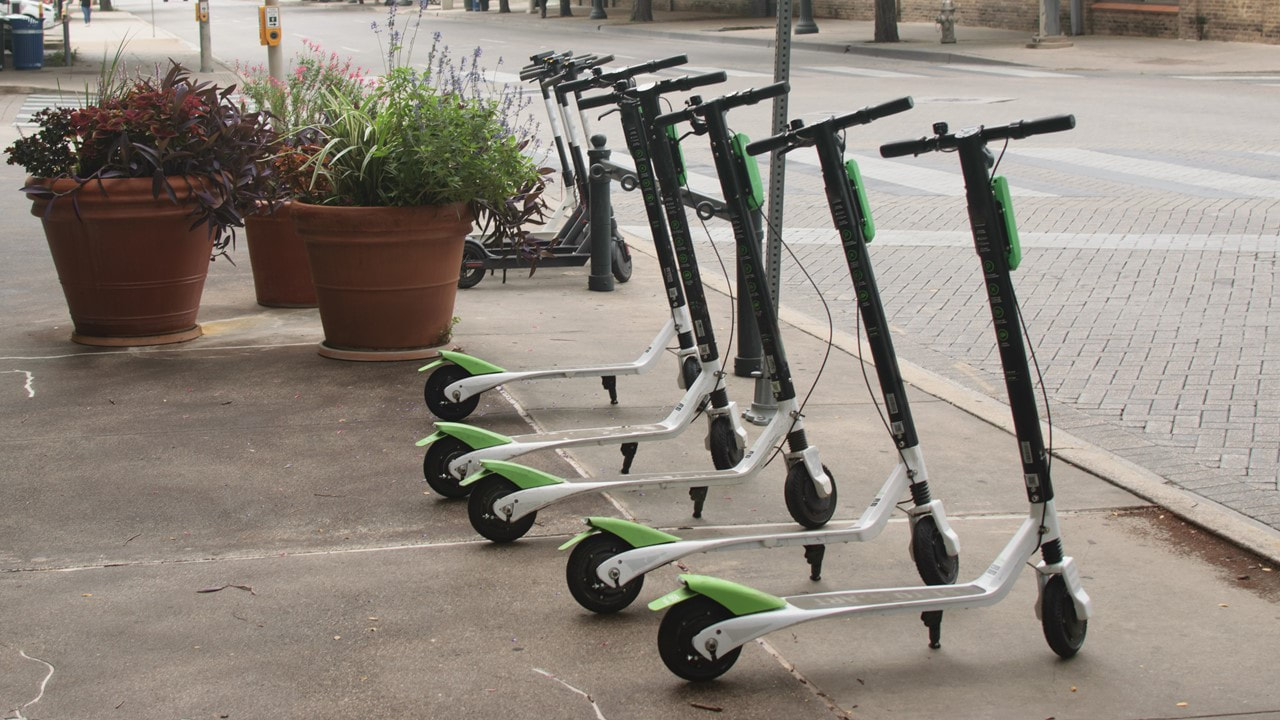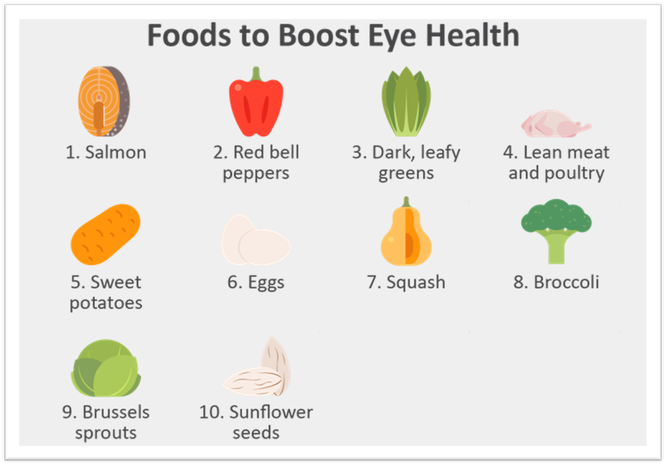|
By now, you’ve probably seen a few people cruise by on an electric scooter. They may have been a few teenagers on their way to a friend’s house, somebody using the vehicle as a new way to commute to work, or maybe it was even yourself doing the riding. E-scooters have become common in many cities across the United States, with industry leaders Bird and Lime reporting millions of rides so far.
But, while e-scooters might be revving up in terms of popularity, new technology brings new complications and new concerns. What are e-scooters? E-scooters are not to be confused with mopeds or Vespa-like scooters, which allow users to sit, and travel at relatively high speeds. Rather, e-scooters are operated while standing up and often cannot go faster than 15 to 20 mph. Users get started by downloading an app that will help them find a nearby e-scooter. They can then unlock the vehicle for an initial starting fee with total payment being calculated according to either distance traveled or how long the user rides the scooter. E-scooters are usually dockless and operate like dockless bike-sharing programs with users able to find and park the vehicles in a wide variety of locations. E-scooters often do not require the operator to have a driver’s license. Know the Risks and Rules While operating an e-scooter, users are required to obey state and local traffic laws, but these can vary greatly depending on where you live or where you’re riding. Some jurisdictions have implemented laws pertaining specifically to e-scooters that limit where they can be ridden and how fast they can travel, so make sure you are familiar with the local rules before you take a ride. Even if you are certain that you’re not breaking any laws, operating any type of motor vehicle, even an e-scooter, brings a certain amount of risk. E-scooters might not travel as fast as cars, but even at speeds as low as 15 mph, an accident involving a rider, pedestrians or other motor vehicles can lead to serious injuries including broken bones, head injuries and soft-tissue injuries. Where Does the Finger Point? With e-scooters still being a relatively new form of transportation, many insurance companies are still inconclusive on how coverage and liability applies to accidents and injuries caused or suffered by riders. You may be riding at your own risk when you step onto a scooter, so it’s important to know whether you’re covered under your own insurance policies. Your homeowners and auto insurance policies may have been created before the rise of e-scooters, so there may be no mention of the devices. A standard homeowner policy does not cover motor vehicles, and standard personal auto policies exclude liability coverage for vehicles with less than four wheels—e-scooters generally have two. Motorcycle insurance also might not cover e-scooters. Personal liability umbrella policies provide coverage for incidents excluded from underlying insurance policies, and thus may provide coverage for e-scooters. It is important to know the specific details of your homeowners and auto policies before you can count on coverage for an injury or accident involving an e-scooter. Contact TWFG Insurance - Tony Voiron today for more information.
0 Comments
Mental health plays a huge role in your overall health and well-being. It affects everything, including how we think, feel and act, and helps determine how we make healthy choices and cope with stress. Because it’s such a crucial component of your health, it’s important to focus on maintaining or improving your mental health. Here are five simple ways to do so every day:
Eye Health 101 Keeping your eyes healthy is a very important task. Fortunately, it’s also an easy thing to do. Here are five simple ways you can keep your eyes healthy:
The Unexpected Ingredient in Your Oats
It’s not a superfood, and it’s not naturally occurring. It’s a pesticide. According to a report by the Environmental Working Group (EWG), almost three-quarters of the oat cereal, oatmeal, granola and oat bars contained traces of glyphosate. What’s glyphosate? Glyphosate is one of the most widely used herbicides in the world. It’s the main ingredient in hundreds of weed-killing pesticides. Are oats safe to eat? Federal officials report that the levels found in the oats is deemed to be “safe.” However, EWG claims that no level of exposure is safe, as glyphosate was classified as a probable carcinogen in 2015. To reduce your exposure, but still eat your oats, opt for organic oats. TWFG Insurance Tony Voiron, Metairie La (504) 322-7299 The Lower Health Care Costs Act, a bipartisan bill proposed by the Senate Health Committee, was introduced on May 23, 2019. This bill sets out to address surprise medical billing, reduce the cost of prescription drugs and the overall cost of delivering health care, and improve transparency. The proposed legislation also includes a provision that would require benefits brokers to disclose their fees and any incentives they may receive from insurers.
Potential Impact This provision was included in the proposed legislation after a February 2019 investigation by ProPublica revealed that the insurance industry often offers undisclosed incentives to influence brokers’ plan choices. Dave Chase, co-founder of broker certification group Health Rosetta, says that, “By requiring advisers to disclose all of their sources of compensation, we can level the playing field for employers who are trying to lower their health costs. Instead of regularly accepting 5% to 20% annual cost increases, they can be more selective to ensure their adviser is actually serving their best interests.” This proposed legislation would create a new level of transparency between employers and their benefits brokers, as many employers aren’t aware of the inner workings of health plan agreements or renewals. What’s next? The Lower Health Care Costs Act is just proposed legislation at the moment, meaning that there are no compliance obligations to meet. However, Sen. Lamar Alexander, bill co-sponsor, hopes that the bill will be on the Senate floor for a vote by July of this year. To view the proposal, click here. Many hardware and software developers have started to integrate digital assistants into their products, such as Amazon’s Alexa, Google’s Assistant and Apple’s Siri. These assistants offer a number of services and benefits, and can even be activated remotely using voice commands. However, because these platforms rely on connecting to a remote server, they run the risk of sending your recorded conversations or even personal information to others without your knowledge.
How digital assistants work Every digital assistant uses the same underlying technology to answer questions and fulfill requests. Here’s an overview of how assistants record audio, send data to remote servers and analyze requests in order to respond:
Protecting your information No technology is perfect, and it’s possible for smart devices to take unintended recordings for a number of reasons, such as a misinterpreted phrase, background noise, a damaged microphone or tampering. And, because the process of sending recordings to servers happens in seconds, you may not have a chance to prevent your information from being sent elsewhere. Here are some tips you can use to control when your devices take recordings and protect your data:
According to a study published by the Food and Drug Administration (FDA) on Monday, May 6, 2019, the active ingredients found in sunscreens can end up in the bloodstream at higher than recommended levels. The FDA says that this small study, which involved 23 volunteers, warrants conducting further safety studies.
The Study The study evaluated one sunscreen cream, one lotion and two sprays. The 23 volunteers applied the specified sunscreen to 75% of their body four times a day for four days. Over the course of seven days, blood tests were conducted to determine the levels of certain chemicals absorbed into the bloodstream. The study found the maximum plasma levels of avobenzone, oxybenzone and octocrylene (in one sunscreen, they also tested for ecamsule)—the active ingredients in sunscreen—to be above the level of 0.5 nanograms per milliliter (ng/mL). For example, the study found the avobenzone concentration to be 4 ng/mL and 3.4 ng/mL in the sprays, 1.8 ng/mL in the cream and 4.3 ng/mL in the lotion. The 0.5 ng/mL level is significant because it’s the level at which FDA guidelines call for further safety testing. What Does This Mean? The effects of plasma concentration exceeding the FDA’s limit isn’t currently known. As such, the study’s research team called for further safety testing to be conducted. However, the research team stated that the results of this small study do not suggest that people should stop using sunscreen. Failing to use sunscreen can leave you vulnerable to the sun’s damaging ultraviolet rays. What’s Next? It’s likely that further safety testing on sunscreen and its active ingredients will be conducted. Until told otherwise, continue to use sunscreen as directed when you’re out in the sun to protect your skin. More than 50 people, mostly children, have been infected by the measles in the United States this year. This particular outbreak concerns southwest Washington and northwest Oregon. Nationwide, though, the Centers for Disease Control and Prevention (CDC) states that eight other states (California, Colorado, Connecticut, Georgia, Illinois, New Jersey, New York and Texas) have reported cases of measles in 2019, bringing the total of reported cases to 79.
What is measles? Measles is a highly contagious illness caused by a virus called rubeola. People are most susceptible to contracting this illness in early childhood. In the current outbreak in Washington and Oregon, the majority of the cases involve children between 1 to 10 years old. Measles usually causes fatigue, runny nose, cough, slight fever, and head and back pains. In later stages, it can cause a high fever, Koplik’s spots (small white dots) inside the mouth and a rash that starts around the hairline and spreads downward. Measles has a 25 percent hospitalization rate, is not treatable and has no cure. The virus can lead to serious complications, such as encephalitis, or inflammation of the brain. In some extremely severe cases, measles and its complications can be fatal. How can the measles be prevented? Measles can be prevented with the measles, mumps and rubella (MMR) vaccine. This vaccine is typically given in two different doses, the first being administered between 12 to 15 months of age and the second being administered between 4 to 6 years of age. The CDC reports that the two doses together are 97 percent effective at preventing the disease, while just getting one dose is 93 percent effective at preventing the disease. Without being vaccinated, you’re at risk of contracting measles, especially because it is a highly contagious illness. If you live in an area that’s experiencing a measles outbreak, call your doctor for recommendations on what to do. Your doctor may recommend staying in your house until the outbreak subsides. VOLUNTEER WORK
In addition to boosting your social well-being, volunteering can make you feel physically stronger, increase mental sharpness, aid in reducing stress and even help you live longer. Despite these proven positive effects, only 1 in 4 Americans regularly volunteer, according to the Bureau of Labor Statistics. If you’re curious about the specific benefits of volunteering or how to get started, read on. Health Benefits of Volunteering As previously mentioned, volunteering has proven health benefits. Here are just a few of those benefits:
How to Get Started Many organizations can benefit from your volunteer time. A good place to start looking is within your community. Pick one that complements your talents, interests, schedule and physical abilities. When you’re thinking about what you’d like to do as a volunteer, it may be helpful to think about what’s motivating you. Some volunteers are motivated by the following:
You can browse online listings or a newspaper to identify volunteer programs. To ensure a successful outcome for both you and the volunteer program, ask yourself the following questions:
Did You Know?
If your home becomes uninhabitable for reasons covered in your renters insurance policy, the insurance company will reimburse you for your temporary living expenses until you are able to find a new place to live. Renters insurance is there to not only protect the belongings in your home, but so much more. There are so many misconceptions when it comes to what renters insurance is and what it covers. Here are some common myths about renters insurance: I don’t have enough stuff to get renters insurance.
My landlord’s insurance will cover the damages to my belongings.
Personal belongings are the only things covered under renters insurance.
I can’t afford renters insurance.
Don’t wait until it’s too late to start thinking about renters insurance. We spend a lot of time and energy filling our living spaces with items that make it feel like home—it only takes one unexpected event to have it all stripped away. Renters insurance can give you peace of mind knowing that you and all of your belongings are covered. Call TWFG Insurance Tony Voiron for a quote on Renters Insurance in Metairie and New Orleans La. Manufactured homes, also commonly referred to as mobile homes, are built in a factory and moved to a chosen location, they aren't much different than a site-built single-family home — even when it comes to insurance. Obtaining coverage specific to your mobile home is essential. A standard homeowners insurance policy will not cover your liabilities in the same way this specific policy will.
The Basics A mobile home insurance policy will provide coverage for your home and property such as the following:
Additional Endorsements For added protection, consider purchasing these endorsements:
Top Ways to Save:
Call TWFG Insurance Tony Voiron for your quote today 504-322-7299. The internet, smartphones and other online technologies have helped businesses streamline their supply chains and inventories. However, human error, software incompatibilities between vendors and a lack of transparency can cause even the most efficient operations to experience time-consuming and costly errors.
Online cryptocurrencies like bitcoin depend on a technology called blockchain that can instantly share, secure, verify and store records simultaneously. As a result, many businesses are using blockchain systems to implement efficient and secure recordkeeping systems. What is blockchain and how does it work? Blockchain is a new type of shared, encrypted recordkeeping system that can be seen in real time by everyone involved in a supply chain or other business operation. These systems work by recording a separate record, or “block,” every time a process is updated. Essentially, each block in the system serves as a digital puzzle piece that verifies the next record, creating a digital chain. Each block is encrypted and can’t be changed, since altering any information in the record would be like taking a piece out of a finished puzzle and trying to change its shape. Advantages of blockchain Because each stakeholder in an operation keeps a separate copy of blockchain records, the systems allows for a large amount of transparency and communication. Businesses can also customize how users see information in a blockchain system. For example, an online retailer could let a customer view their orders and shipping statuses, but not their full inventory system. Blockchain technology can give businesses an instant picture of both large and small-scale operations, such as a single product’s location or real-time sales figures. And since records can’t be altered or viewed without permission, they’re extremely safe from cyber attacks and data breaches. Potential applications Here are some of the potential benefits of a blockchain management system:
|
AuthorWrite something about yourself. No need to be fancy, just an overview. Archives
April 2020
Categories |











 RSS Feed
RSS Feed